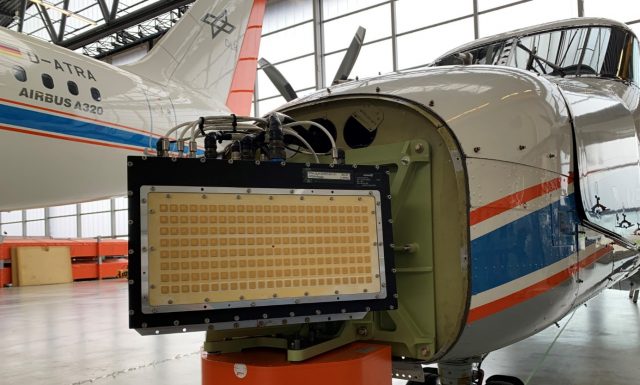
German sensor solutions provider Hensoldt says it is pushing ahead with the development of a collision warning system for civil and military drones and has already completed first test flights.
According to the company, the radar sensor as the core element of a collision warning system was tested in flight as part of the ProSA-n (military) and KoKo2 (civil) study programs, while work on the software required for interaction with an autopilot is well advanced.
Since the beginning of the year, Hensoldt has also been involved in the EUDAAS (= European Detect and Avoid System) program, in which several European companies are developing a concept for bringing large military medium altitude/long endurance (MALE) remotely piloted aircraft systems (RPAS), such as the Eurodrone recently released by the German parliament, into European airspace.
In December 2020, the European Commission (EC) awarded a contract to the EUDAAS consortium, which is headed by Saab as leading partner, to develop and validate a European detect and avoid (DAA) solution to allow large military RPAS to fly in European air traffic. The DAA program will involve Sweden, France, Germany, Italy and Spain, and will run from 2021 to 2023. The EC is contributing over $36.5 million to the program.
As early as this summer, a demonstrator of the collision warning system is to prove in flight tests that the sensor performance and the software-supported avoidance logic correspond correctly with the autopilot.
“We have progressed faster than expected with our ‘detect & avoid’ radar,” says Erwin Paulus, head of Hensoldt’s radar division. “In the meantime, the complete functional chain from detection and classification to the initiation of avoidance maneuvers is working so reliably that we are sure we will be able to demonstrate a basic system for autonomous flying in the summer.”
Hensoldt’s “detect-and-avoid” radar uses active electronically scanning array (AESA) technology, which allows multiple detection tasks to be performed simultaneously and enables rapid target detection. The scalable radar can be used in large military drones as well as on board smaller civilian drones.


























